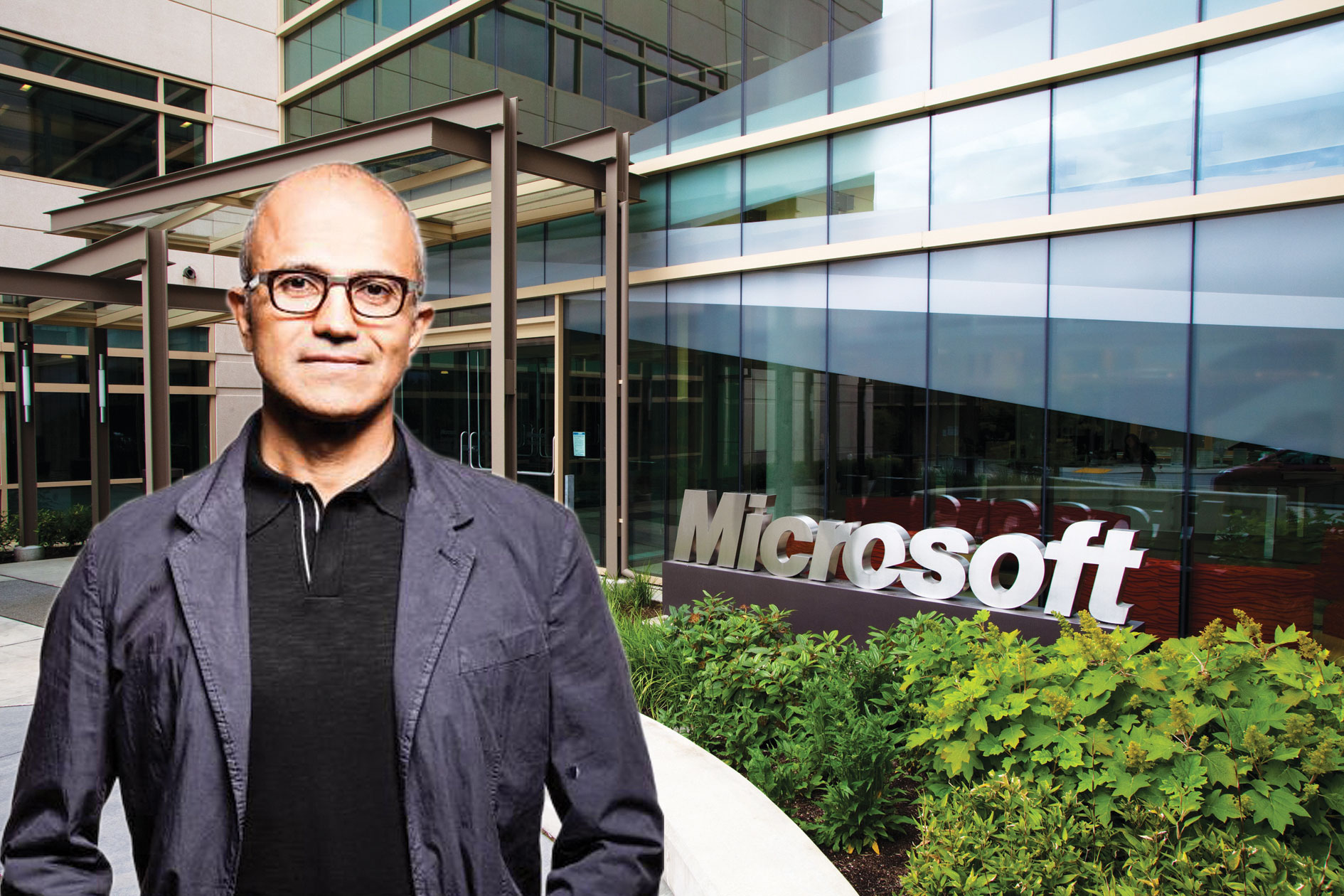 CLOUD
CLOUD
 CLOUD
CLOUD
 CLOUD
CLOUD
Updated:
Microsoft Corp. capped off a no-good awful day on Wall Street with a happy ending, reporting earnings that handily beat analyst estimates.
On a day when the Dow Jones Industrial Average fell more than 600 points and the Nasdaq skidded nearly 4.5 percent, Microsoft reported fiscal first-quarter revenue of $29.1 billion, up 19 percent year-over-year and better than Microsoft’s most optimistic guidance of $28.05 billion. A profit of $1.14 per share beat consensus estimates by 18 cents.
Investors rewarded the company with a 2.1 percent boost in its after-hours share price after hammering it — and nearly everybody else — during normal trading hours. Update: Microsoft shares rose about 6 percent Thursday as the overall tech-heavy Nasdaq recovered some of its Wednesday losses, up about 3 percent.
Chief Executive Satya Nadella (pictured) credited the strong performance to a “business model that is fundamentally aligned to customer success.” The company said its focus on hybrid cloud, enabling customers to marry their own data centers with cloud computing, is resonating with customers that are reluctant to move workloads wholesale to the public cloud.
“We don’t think of hybrid as a stopgap on the move to the cloud,” Nadella said. “We think of it as distributed computing with the cloud and the edge working together.”
Forrester Research Inc. analyst Christopher Voce agreed that Microsoft’s holistic message is hitting home. “Its hybrid cloud strategy has resonated with enterprises as a more realistic and flexible approach” than that of other cloud providers, he said.
Although Microsoft doesn’t break out revenue numbers for its Microsoft’s Azure infrastructure-as-a-service offering, the company said Azure revenues grew 76 percent. Although that’s lower than from the torrid, near-triple-digit growth of previous quarters, it’s also on a much larger base.
The drop in growth rate “is perfectly understandable given the size of the company’s overall Azure effort and the fact that as businesses get bigger, their expansion inevitably slows,” said Charles King, principal analyst at Pund-IT Inc.
Chief Financial Officer Amy Hood said further growth moderation can be expected in the future as Microsoft trades off some growth for higher profit margins. The company said customers are making longer-term commitments to Azure, which helped drive commercial unearned revenue to $27.3 billion, up 22 percent.
While Hood’s comments might indicate that Microsoft is toning down its ambitions of overtaking Amazon Web Services Inc. in the cloud, King said settling for second place isn’t in the company’s DNA. “Microsoft didn’t become Microsoft by being complacent,” he said.
Total revenues for what Microsoft calls its Intelligent Cloud segment rose 24 percent, to $8.6 billion, well above the $8.35 billion guidance the company had offered earlier. Intelligent Cloud encompasses a suite of public and hybrid cloud offerings along with application development database and artificial intelligence tools.
The applications business also enjoyed robust growth, with Office commercial products and cloud services revenue up 16 percent in constant currency on the back of 35 percent growth in Office 365 commercial revenue. Microsoft now claims 155 million Office 365 commercial users — up 35 percent from a year ago — and 32.5 million more consumer users. Office products revenue fell 13 percent as customers continued their shift to the cloud.
Sales of the Dynamics line of enterprise applications and cloud services grew 20 percent, powered by 49 percent growth in sales of the Dynamics 365 family of enterprise resource planning and customer relationship management software. Nadella said Dynamics 365’s “modular, extensible” architecture appeals to customers that are looking to get away from monolithic enterprise applications.
“There is a fundamental shift in the category when it comes to both business models and technology,” he said. “We feel we are well-positioned.”
Analyst Patrick Moorhead of Moor Insights & Strategy agreed that the market is headed Microsoft’s way. “The company recently snagged some high profile wins of ‘all-in’ customers, which is key,” he said. Microsoft has the ability to “surround an Oracle or SAP system to create transformative workflow products,” and it has credibility in the enterprise. “Trust is a key theme that I think Microsoft is winning.”
King agreed. Dynamics is “a critical element in the company’s end-to-end enterprise solutions strategy,” he said. “So far, Microsoft customers appear to be responding favorably.”
The company’s biggest business continues to be on the desktop, and there the news was also good, with 15 percent growth in personal computing, driven primarily by gaming and Windows.
Nadella expressed enthusiasm about the impending addition of the GitHub platform to its stable of development projects. The company’s blockbuster $7.5 billion acquisition of the open source icon is expected to close during the current quarter. “We are working hard to gain the trust of the developer community through GitHub and we have seen indications that we are comparable to Amazon in that respect,” he said.
Support our mission to keep content open and free by engaging with theCUBE community. Join theCUBE’s Alumni Trust Network, where technology leaders connect, share intelligence and create opportunities.
Founded by tech visionaries John Furrier and Dave Vellante, SiliconANGLE Media has built a dynamic ecosystem of industry-leading digital media brands that reach 15+ million elite tech professionals. Our new proprietary theCUBE AI Video Cloud is breaking ground in audience interaction, leveraging theCUBEai.com neural network to help technology companies make data-driven decisions and stay at the forefront of industry conversations.